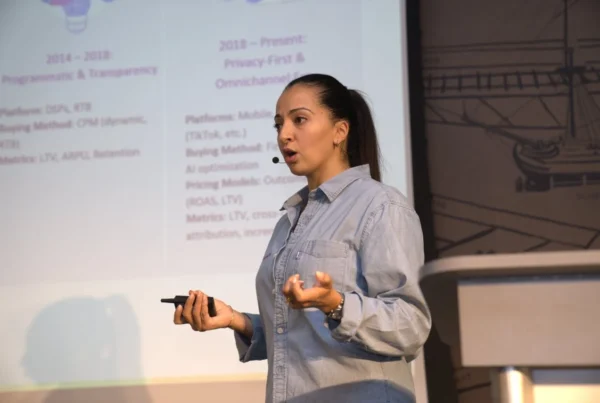GSMA’s Open Gateway aims to deliver universal telecom APIs for fraud prevention and innovation. However some developers are already turning to AI platforms offering similar signals with less friction. Is AI going to solve some of the hurdles or coexist with APIs? In this guest perspective, Dmitry Kurbatov, CTO at SecurityGen, explores how LLMs are reshaping developer expectations — and what that means for telcos racing to stay relevant.
The GSMA Open Gateway was launched with a clear promise: to expose universal telecom APIs to developers, unlocking collaboration and creating new revenue streams.

A standardized way for telcos to open their networks and offer trusted access to different functions, starting with the most viable use cases to fight fraud-like SIM swap checks, number verification and location services.
But what if something else can do a similar thing and do it faster?
If you haven’t used it, you should know: the rise of GPTs has already happened. GPTs are tuned or slightly adapted versions of ChatGPT based on OpenAI’s models. They’re versions that you can configure with specific instructions and data to serve a particular purpose. A toy for enthusiasts, some might say.
And there are a number of GPTs created with telecom context, positioned as AI-powered, API-driven and instantly accessible tools, claiming to provide programmable access to telecom intelligence (not yet the network itself). Some are already live, offering services such as SIM swap detection, porting status, number activity checks and location-based data.
They don’t yet offer the depth of integration that Open Gateway APIs suggest, but at their current speed of evolution, that gap may not last long. Most importantly, they’re already available to developers today, at zero distance.
Much of what Open Gateway proposes to expose via network APIs can already be collected or inferred from alternative sources. And yet, the telecom industry still poses as the gatekeeper to high-integrity data. But the longer it waits to make that data accessible in a developer-first way, the more it risks being abstracted out of relevance.”
So here’s the real question: When developers need telecom data, who do they turn to – a regulated API or an AI shortcut that just (possibly) works?
There was a good article almost a year ago about network API realities, summing up to a simple point that the industry keeps building technical solutions (like standardized network APIs) before confirming real market demand.
If we make the assumption that market demand was proven since then, then to drive adoption APIs must be discoverable, easy to try without friction and affordable. Developers won’t even test an API if they can’t find it, try it quickly and justify its cost relative to the problem it solves.
And this still seems to be a challenge with Open Gateway. To be clear: AI tools and Open Gateway aren’t direct competitors, at least not technically, in the sense of how they work. But from a developer’s perspective, the experience couldn’t be more different.
All AI tools are developer-first, quite simple, and available now. Even if it doesn’t work as expected, the cost of experimentation is very low. If it works-keep using it.
If we park for a moment the legitimacy problem (indeed, there are questions about where AI is getting its data from, whether it’s GDPR-compliant, etc.) – these are valid questions, but for many developers, they come as second problem to address, if the first hypothesis about viability/usefulness is proven.
“Telecom” GPTs and similar tools lower the barrier to experimentation. They offer a playground for validating use cases and shaping what developers want next.
Eventually, yes, telcos must be in the loop. Secure, operator-backed APIs are essential for scale, compliance and trust. But if the rollout takes years, the ecosystem will grow around them, not through them – likely finding what is required somewhere else.
Speed beats precision in many cases. If a GPT-based tool delivers a “good enough” result, developers will adopt it, iterate and keep going.
A Real Signal from the Market
In the first half of 2025 alone, I’ve had 1 fintech and 2 fraud-prevention companies reach out asking how to get live telecom ‘signals’ like SIM change data, number status or location metadata, they needed it for validating secure customer transactions. None of them mentioned or considered Open Gateway. They weren’t asking for the perfect solution, just something that could be integrated fast.
They knew the value of such data, but couldn’t find a clear path through the formal channels. The CTO of one of these companies was so frustrated, he basically told me:
“For decades telcos have been trying to expose the network to developers. Not one single attempt has succeeded – Intelligent Network, 4G service capability exposure, 5G network exposure, MEC, now CAMARA… When will they realize there is nothing like what developers need?”
Much of what Open Gateway proposes to expose via network APIs can already be collected or inferred from alternative sources. And yet, the telecom industry still poses as the gatekeeper to high-integrity data. But the longer it waits to make that data accessible in a developer-first way, the more it risks being abstracted out of relevance. If AI builders define the access layer and developers follow, telcos may lose not only revenue but another role in this new ecosystem.
There’s no need to offer advice on how to improve the solution, everyone already knows what needs to be done: focus on those who will actually use it, partner with those who do it better, and accelerate the rollout. But easier said than done.
Individual telcos can move fast. But as an industry, telecom often defaults to what it’s used to. That’s the opening AI will exploit, not by breaking standards, but by experimenting faster.
It’s not even clear what the future of programmable communications will look like or whether developers will actually use it. That still needs to be tested. And something tells us that, once again, the telecom industry is starting execution before proving viability with potential users.
So who will developers bet on?





